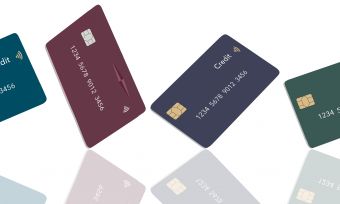If you’re looking for the best credit card for your spending habits, a card’s colour is a good indication of whether it’s right for you. Canstar takes a closer look at the different coloured cards on offer.
What’s the difference between credit cards?
Plastic and metal credit cards come in a range of colours, including blues, blacks, reds, pinks and purples. However, regardless of colour, credit cards fall into two main types:
Low rate/fees credit cards
These are no-frills cards that offer low interest rates and/or low/no annual fees.
Reward credit cards
In return for higher annual fees and interest rates, these types of cards offer rewards, which usually come in the form of cashbacks, or points programs, such as Airpoints, that can be used for travel and other goodies.
Most rewards credit cards on offer from NZ providers are called platinum cards, regardless of their physical colours. Instead, the precious metal is used to refer to the luxe features the cards offer.
→ Related article: What Type of Credit Card Should I Get?
What are Gold and Platinum credit cards?
A gold card is no longer the gold standard of premium credit cards. In fact, there’s only one gold card on offer in NZ: the American Express Gold Rewards Card. All the other premium rewards cards are platinum cards, even though very few of them are actually platinum in colour.
Platinum cards are available from these providers:
There’s no strict definition of what constitutes a platinum card, although most:
- Are a rewards credit card
- Come with benefits not available on a standard card from the same issuer, such as complimentary international travel insurance
- Have higher interest rates and fees than a regular no-frills credit card
- Offer higher credit limits (but also require an applicant to prove a higher level of income)
Benefits vary from card to card, but most platinum cards offer:
- Attractive rates on rewards points, often accompanied by a very high, or non-existent, cap on the number of points you can earn
- Complimentary travel insurance
- Concierge services, for example, assistance with booking accommodation or travel arrangements
- Airport lounge passes: access to the slightly cushier waiting areas in certain airports
However, while platinum cards offer perks and benefits, even if your spending habits are immaculate and you clear your balance each month, their fees are higher than no-frills cards. So, when deciding if a platinum card is the right credit card for you, it’s important to work out if its benefits outweigh its higher cost.
What other colour cards are there?
While platinum and gold are the two standard colours applied to credit cards, there are a couple of uniquely colour-branded cards available in Aotearoa:
Purple Visa credit card
This card is issued by Finance Now, which is part of SBS Bank. Like its name suggests, it’s a purple card. As well as a rewards program, the Purple Visa credit card offers long-term, interest-free purchases from selected retailers.
SBS Pink Ribbon Visa
Also from SBS Bank, this is a charity rewards card. For every account opened, the bank will donate $20 to Breast Cancer Foundation NZ, plus a further 5c is donated every time you use your card. The SBS Pink Ribbon Visa also has a rewards program, which you can choose to keep or donate to the cancer charity.
What are black credit cards?
Quite a few of the platinum credit cards on the market are coloured black. However, when most people talk of a black credit card, they are thinking of American Express’ Centurion credit card.
This is an invite-only card offered to big spenders who annually put hundreds of thousands of dollars on their plastic. It also comes with huge fees: a US$10,000 initiation fee, plus a US$5000 annual fee.
Although the card comes with some big perks, if you are rich enough to be offered one, you probably don’t really need all the freebies!
Compare Credit Cards with Canstar
If you’re interested in a new credit card, our free comparison tool covers all the major cards in the market, and includes our prestigious Star Ratings.
The comparison table below displays some of the rewards credit cards currently available on Canstar’s database for Kiwis looking to spend around $2000 per month (some may have links to providers’ websites). The products are sorted by Star Rating (highest to lowest), followed by provider name (alphabetical). Use Canstar’s credit card comparison selector to view a wider range of credit cards. Canstar may earn a fee for referrals.
About the author of this page
This report was written by Canstar’s Editor, Bruce Pitchers. Bruce has three decades’ experience as a journalist and has worked for major media companies in the UK and Australasia, including ACP, Bauer Media Group, Fairfax, Pacific Magazines, News Corp and TVNZ. Prior to Canstar, he worked as a freelancer, including for The Australian Financial Review, the NZ Financial Markets Authority, and for real estate companies on both sides of the Tasman.
Enjoy reading this article?
You can like us on Facebook and get social, or sign up to receive more news like this straight to your inbox.
By subscribing you agree to the Canstar Privacy Policy





Share this article